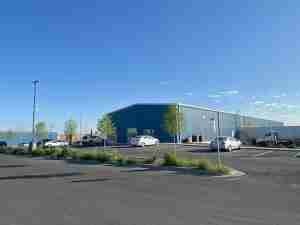Cement makers see China-led bonanza as Pakistan spends billions
By: Faseeh Mangi, Kamran Haider and Khalid Qayum | Jun 01 2017 at 05:30 PM | Intermodal | Ports & Terminals
(Bloomberg)—In his air-conditioned office protected from the scorching heat and dust outside, S.M. Imran points at a white lined map pinned on his wall showing Power Cement Ltd.’s planned expansion at its plant in Pakistan’s arid southern Sindh province.
Power Cement is aiming to triple capacity, riding a wave of Chinese-financed infrastructure projects across Pakistan valued at more than $50 billion. It’s part of Chinese President Xi Jinping’s biggest gambit in his “One Belt, One Road” project to rebuild the ancient Silk Road, a trading route of ports, railways and highways snaking across mountains, deserts and disputed territory through Asia to Europe and Africa.
The anticipated demand has been a boon for Pakistan’s cement industry, which is expected to increase capacity by 56 percent to 70 million tons in five years, according to Karachi-based brokerage Alfalah Securities Ltd.
“We used to carry stocks, but not anymore,” said Imran, a project director and cement industry veteran who has been in the business for four decades. “This capacity will be required.”
Mega Projects
Cement-makers are betting Prime Minister Nawaz Sharif will ensure timely completion of much needed infrastructure projects ahead of next year’s election, which the premier is widely expected to contest for a second consecutive term.
Read more: China’s Big Political Gambit Hinges on a Remote Arabian Sea Port
With that in mind, the government has committed to a $9.6 billion expansion of the national roads network, such as the Karakoram highway—the main trade route between China and Pakistan—along with about $35 billion on energy projects and power plants to end daily blackouts.
Encouraged by the China-Pakistan Economic Corridor, or CPEC, Gharibwal Cement Ltd. is doubling capacity to more than 13,000 tons a day by August, according to company spokesman Rana Muhammad Ijaz, who said its existing plant is producing at its peak. Power Cement Ltd. is boosting its ability to churn out 10,700 tons a day, while Cherat Cement Co. announced plans to build a third unit days after completing a second, with a capacity of 7,100 tons a day.
Cement stocks have also outpaced the nation’s benchmark stock measure, with a group of 21 companies rising an average 47 percent in the past year, compared to the KSE100 Index’s 34 percent gain.
“The demand isn’t going down because of a boom in the construction sector,” Ijaz said. “Mega projects are being built and the CPEC is a key factor for this boom.”
Pakistan is among the world’s fastest-growing construction markets and is expected to grow an average 12 percent annually for the next five years, according to a BMI Research report published last month. Cement capacity utilization increased to 88 percent in the 10 months through April, the highest in 11 years, while exports declined 19 percent, indicating an increase in local consumption, according to the All Pakistan Cement Manufacturer Association.
After submitting to a $6.6 billion International Monetary Fund reform program to stave off a debt crisis in 2013, Sharif’s government wants to build on the economic gains of the past four years, Finance Minister Ishaq Dar said, while announcing an expansionary pre-election budget in Islamabad last week.
The government plans to spend a record 1 trillion rupees ($9.5 billion) on development projects, a 40 percent increase from this year, and cement makers see their revenue share increasing from the expansion. Dar forecasts Pakistan’s economy will grow six percent in the financial year starting July, the highest in more than a decade.
Yet concerns are rising that Pakistan may be left with unmanageable debts from the opaque Chinese loans. The current account deficit tripled to $7.3 billion in the 10 months through April and foreign exchange reserves also declined 15 percent to $15.9 billion in May, after peaking at $18.9 billion in October last year.
Trade Hub
Others are betting on the expected economic boost from the Chinese projects to pay Pakistan’s way.
From next year “CPEC activity will start really showing results in terms of the logistics networks, major mining projects, major construction projects,” Pakistan Stock Exchange Managing Director Nadeem Naqvi said in an interview in Karachi on Monday. “All of that will start having an impact on the suppliers of these projects including the cement sector.”
That’s something Power Cement Ltd. is eyeing, with completion of its expansion set for the first quarter of 2019.
Black smoke fumes from excavators pressing hard on the throttle to shovel and tip sand from the roadside into green Nissan dumpers near the company’s factory. The sand is being used to add another lane on the highway that connects Karachi’s port to the rest of the country and possibly Central Asia.
“We should start looking into our geo-economic importance,” Planning Minister Ahsan Iqbal, who is overseeing the implementation of CPEC projects, said at a gathering of company executives in Islamabad in April. “Energy, infrastructure and port development will provide a base to Pakistan’s industrialization and make it a regional trade hub.”








